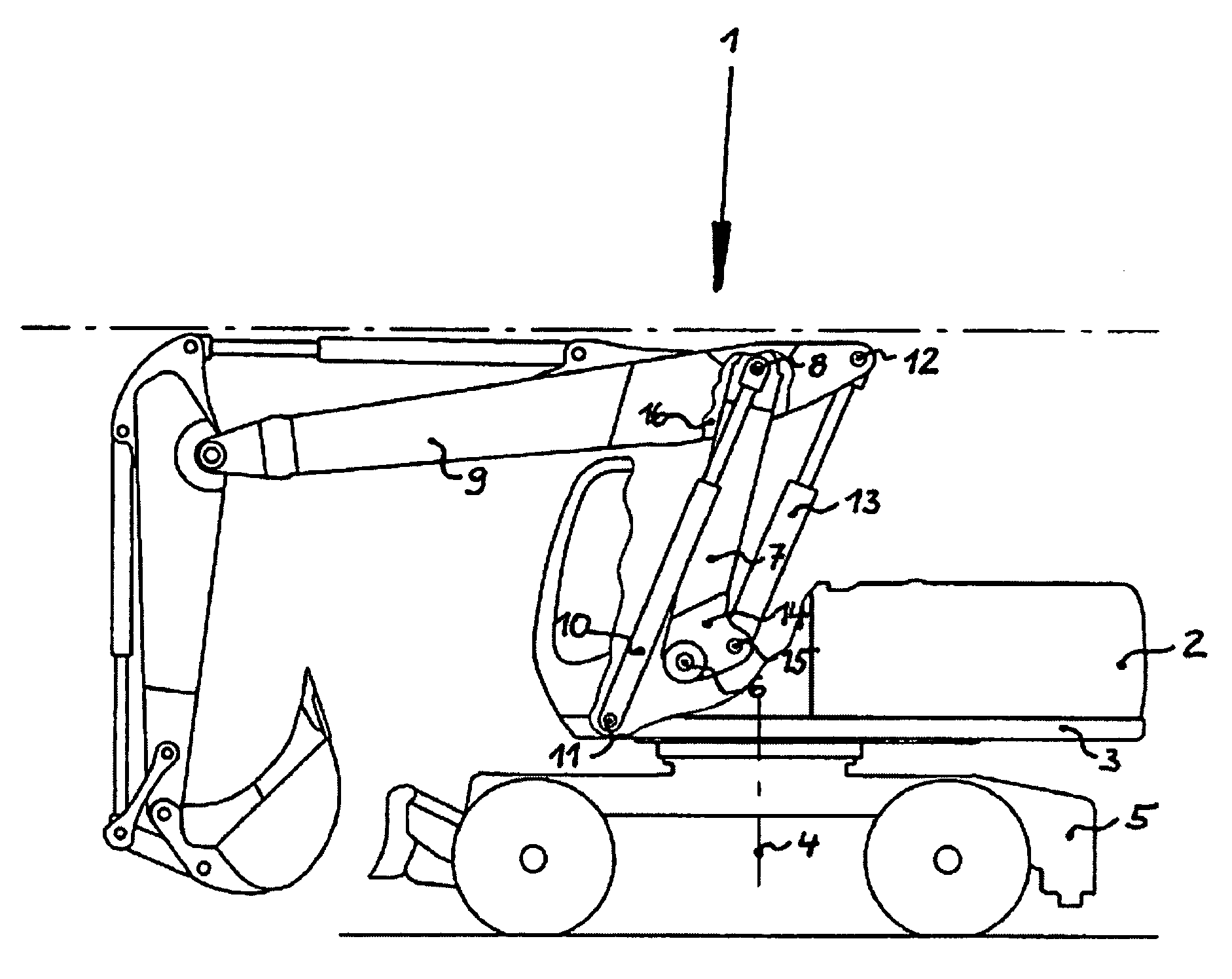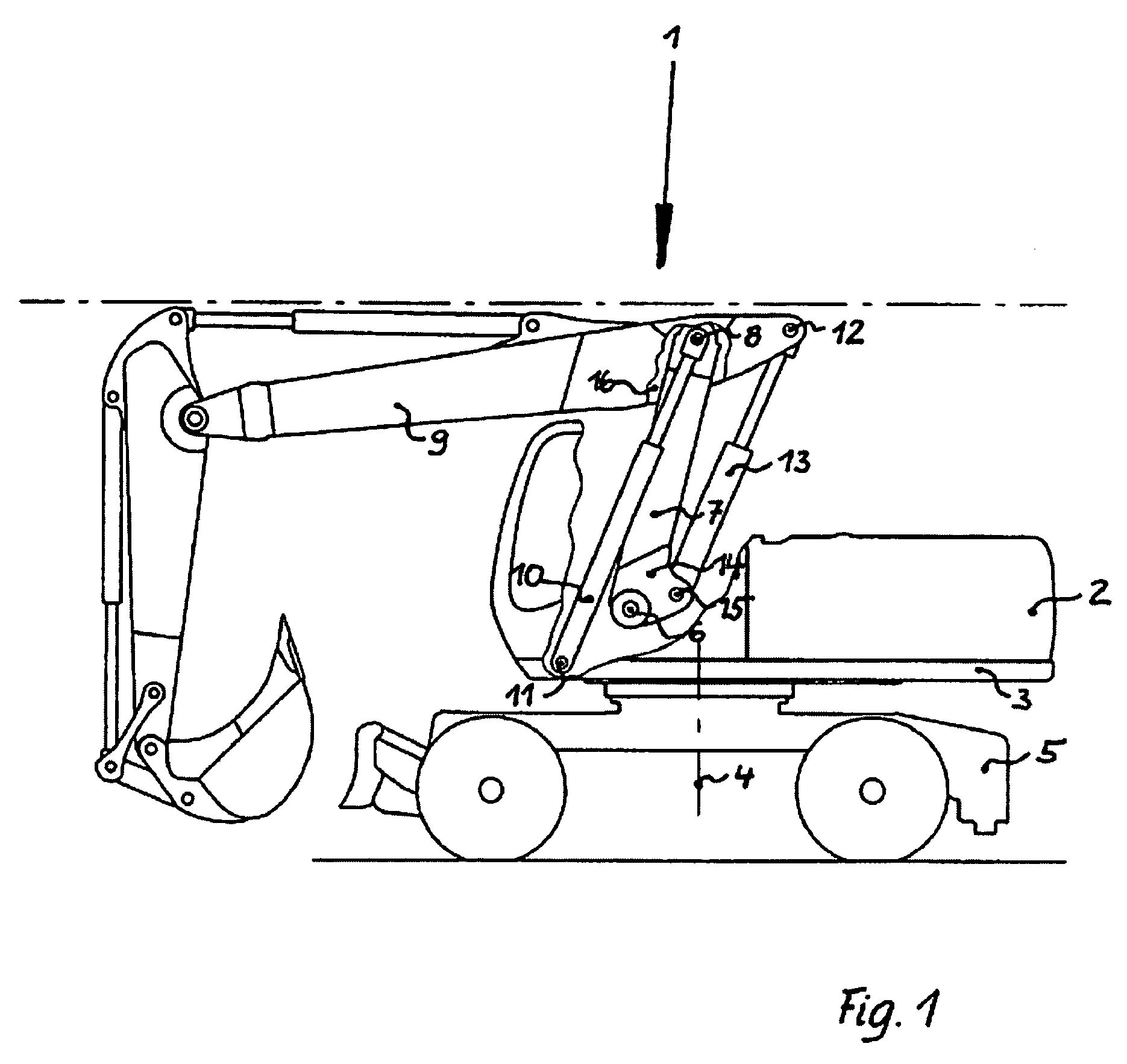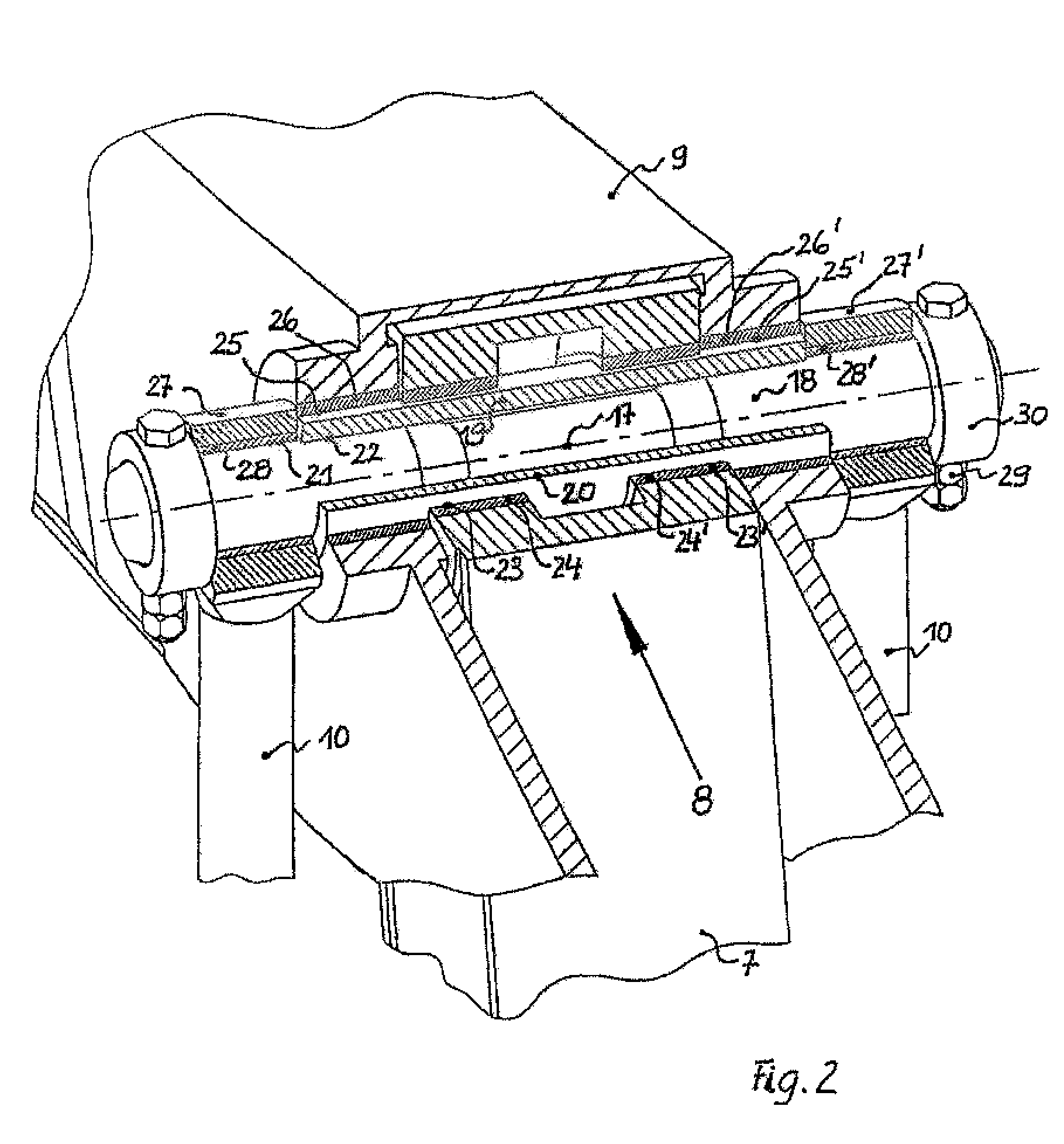Bearing between components on construction machines
a construction machine and bearing technology, applied in the direction of mechanical machines/dredgers, soil shifting machines/dredgers, mechanical apparatus, etc., can solve the problems of high manufacturing cost, limited maximum reach of the self-propelled excavators, and analogous problems on assembly, so as to reduce wear and noise, enhance the ease of movement of bearings, and high resistance to kinking
- Summary
- Abstract
- Description
- Claims
- Application Information
AI Technical Summary
Benefits of technology
Problems solved by technology
Method used
Image
Examples
Embodiment Construction
[0017]The side elevation in FIG. 1 shows the structure of the multiple boom 1 which is mounted on the revolving superstructure 2 and attached to frame 3 of the body of a self propelled excavator. The revolving superstructure 2 can be swiveled in a horizontal plane about a vertically aligned axis 4 in relation to the chassis 5. It consists firstly of a back boom 7, designated the first component, the lower end of which is mounted in a drag link 6 on the frame 3. Its upper end is connected to the mid boom 9, designated the second component, by a bearing 8, said bearing 8 being located inside the mid boom 9, immediately below its upper edge, at a certain distance from its rear end. Two hydraulic boom cylinders 10 are provided as third components for executing the swivel movement of the back boom 7. At one end they act upon the bearing 8 and are mounted at the other end on a knuckle 11, which is located on the frame 3 at a certain distance in front of the drag link 6 of the back boom 7....
PUM
 Login to View More
Login to View More Abstract
Description
Claims
Application Information
 Login to View More
Login to View More - R&D
- Intellectual Property
- Life Sciences
- Materials
- Tech Scout
- Unparalleled Data Quality
- Higher Quality Content
- 60% Fewer Hallucinations
Browse by: Latest US Patents, China's latest patents, Technical Efficacy Thesaurus, Application Domain, Technology Topic, Popular Technical Reports.
© 2025 PatSnap. All rights reserved.Legal|Privacy policy|Modern Slavery Act Transparency Statement|Sitemap|About US| Contact US: help@patsnap.com



